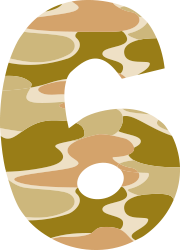
Welcome, Sixth Grade Math Teachers.
This description of the cluster organization includes a link to the NC2ML Collaborative for specific resources for the Grade 6 Instructional Framework.
The clusters are recommended using the progression below, but this is not the only possible progression teachers may use. Please look to the “Connections & Rationale” for notes about when one cluster must follow another, if another progression is desired. Also, continue to focus on how the Standards for Mathematical Practice can be incorporated with these content clusters.
A significant emphasis should be placed on building number sense related to the field of rational numbers, including decimals, fractions, ratios and integers and the interconnections among them. While it appears that much of 6th grade can be interpreted as learning several operations, we underscore that the procedures should follow students’ deep exploration of the quantities first.
Please pay attention to the “Supporting Standards” and “Connections & Rationale” portions of this recommendation. These tools should help to connect mathematical concepts across the units, and to highlight potential opportunities for revisiting previous units’ main ideas.
Recommended Order
* Reasoning with Area and Surface Area Cluster
* Reasoning with Factors and Multiples Cluster
* Ratio Reasoning Cluster
* Division of Fractions Conceptions Cluster
* Making Sense of Decimal Computations Cluster
* Integer and Rational Number Reasoning Cluster
* Making Sense of Coordinate Planes Cluster
* Reasoning with Algebraic Expressions Cluster
* Reasoning with Algebraic Equations Cluster
* Making Sense of Volume Cluster
* Statistical Reasoning Cluster
| Cluster | Recommended Time | Standards |
|---|---|---|
| Building a Mathematical Community (Boaler's Week of Inspirational Math - Week 1) | 1 week | |
| Reasoning with Area and Surface Area Cluster | 2 weeks | G1, G4 Supporting standards NS.1, NS.2, NS.3, EE.7 |
| Reasoning with Factors and Multiples Cluster | 1 week | NS.4 Supporting standards EE.1, EE.3, EE.4, RP.3, NS.1 |
| Ratio Reasoning Cluster | 5 weeks | RP.1, RP.2, RP.3, RP.4 Supporting standards NS.4, EE.9 |
| Division of Fractions Conceptions Cluster | 2 weeks, | NS.1 Supporting standards NS.4, RP.3 G.1 |
| Making Sense of Decimal Computations Cluster | 3 weeks | NS.2, NS.3 Supporting standards G.1 |
| Integer and Rational Number Reasoning Cluster | 3 weeks | NS.5, NS.6, NS.7, NS.9 Supporting standards EE.7, EE.8 |
| Making Sense of Coordinate Planes Cluster | 2 weeks | NS.6, NS.8, G.3 Supporting standards NS.5, NS.6a, NS.9 |
| Reasoning with Algebraic Expressions Cluster | 3 weeks | EE.1, EE.2, EE.3, EE.4,EE.6 Supporting standards NS.4 |
| Reasoning with Algebraic Equations Cluster | 5 weeks | EE.5, EE.7, EE.8, EE.9 Supporting standards EE.2, NS.9, NS.1-3, NS.6, RP.3 |
| Making Sense of Volume Cluster | 2 weeks | G.2 Supporting standards NS.1, NS.3, EE.1, G.1, G.4 |
| Statistical Reasoning Cluster | 2 weeks | SP.1, SP.2, SP.3, SP.4, SP.5 Supporting standards NS.3 |
